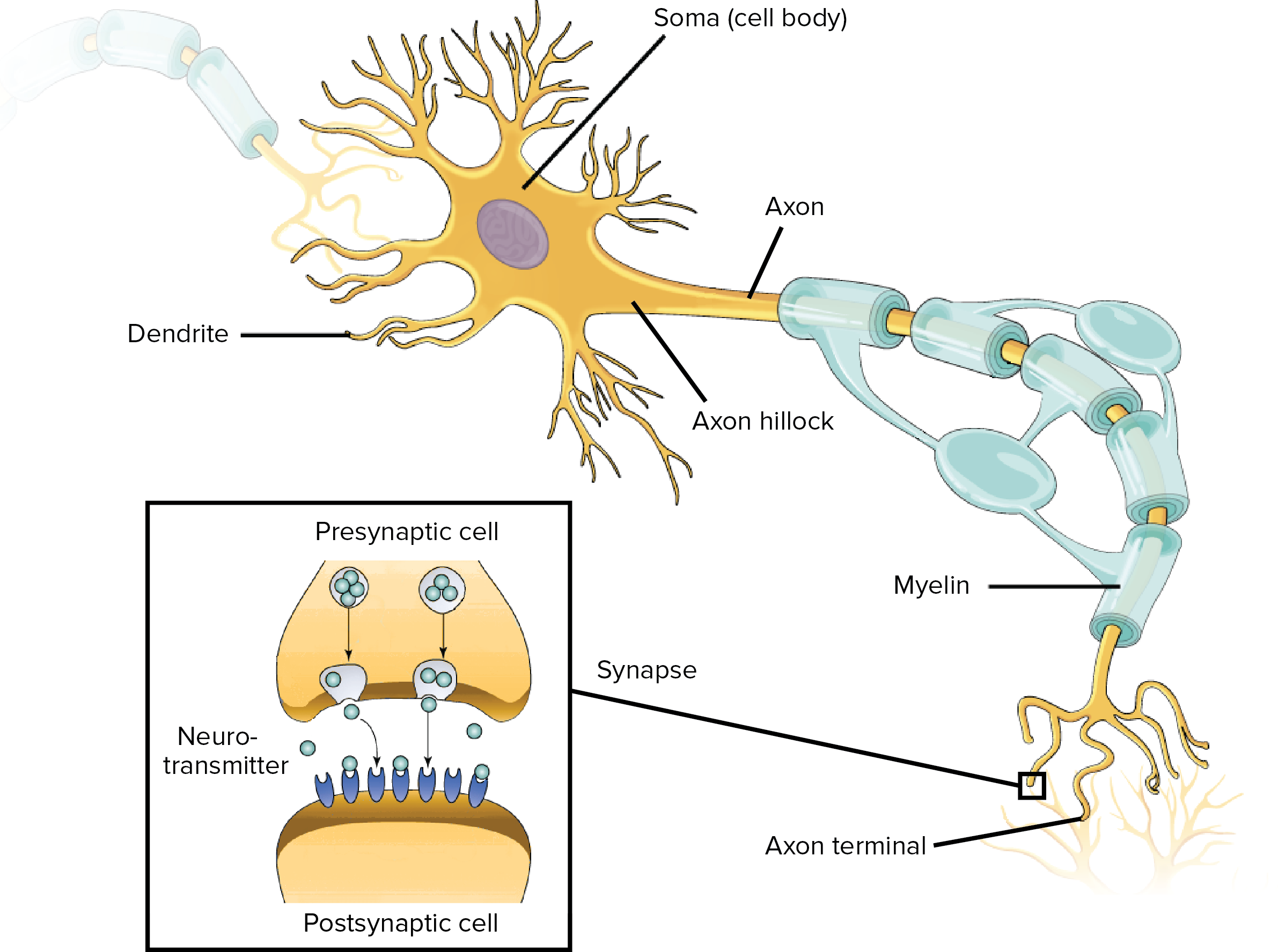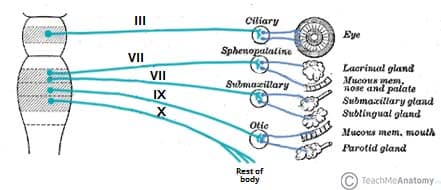Autonomic Nervous System (ANS)
Introduction to the Autonomic Nervous System (ANS)
Overview
The Autonomic Nervous System (ANS) is a crucial component of the peripheral nervous system that regulates involuntary physiological functions. It controls smooth muscle, cardiac muscle, and glands, thus maintaining homeostasis within the body. The ANS is divided into two main branches: the Sympathetic Nervous System (SNS) and the Parasympathetic Nervous System (PSNS).
Structural Classification of the Nervous System
Central Nervous System (CNS)
- Brain
- Spinal Cord

Peripheral Nervous System (PNS)
- Spinal Nerves
- Cranial Nerves

Functional Classification of the Nervous System
Somatic Part
- Sensory
- Motor (targets skeletal muscle)

Visceral Part
- Sensory
- Motor (Autonomic Nervous System)

Differences Between Somatic and Autonomic Systems
Effector Organs:
- Somatic: Skeletal muscle
- Autonomic: Smooth muscle, cardiac muscle, glands

Number of Neurons:
- Somatic: One neuron
- Autonomic: Two neurons (preganglionic and postganglionic)

Synapse Locations:
- Nucleus: Collection of neuronal cell bodies in the CNS
- Ganglia: Collection of neuronal cell bodies outside the CNS
- Synapse: Junction where one neuron ends and another begins

Similarities Between SNS and PSNS
- Both are involuntary (autonomic)
- Both are two-neuron systems with the first cell body in the CNS and the second cell body in the PNS
- Both SNS and PSNS presynaptic axons release acetylcholine
Differences Between SNS and PSNS
Origin in the CNS:
- SNS: Thoracolumbar (T1-L2)
- PSNS: Craniosacral (Cranial nerves III, VII, IX, X, and sacral nerves S2-4)

Location of Ganglia:
- SNS: Near the spinal cord
- PSNS: Within or near target organs
Neurotransmitters:
- SNS: Norepinephrine, epinephrine, or acetylcholine
- "igNORE the SIMP"
- PSNS: Acetylcholine
Effects:
- SNS: "Fight or flight" (increases heart rate, dilates pupils, inhibits digestion)
- PSNS: "Rest and digest" (decreases heart rate, constricts pupils, stimulates digestion)
Sympathetic Nervous System (SNS)
Functions and Pathways
- Provides innervation to peripheral (body wall structure) targets and internal organs
- Key Effects:
- Increases heart rate (HR) and blood pressure (BP)
- Dilates bronchi
- Decreases digestive activity
- Mobilizes stored energy
Pathways
Preganglionic Axons:
- Leave the CNS via the ventral root
- Enter the spinal nerve and ventral ramus
- Leave the ventral ramus via the white ramus communicans
- Some synapse on postsynaptic neurons in the sympathetic chain ganglia, and others form splanchnic nerves to synapse in prevertebral ganglia
Postsynaptic Axons:
- Leave the ganglia via gray rami communicans
- Travel to peripheral targets via ventral or dorsal primary rami
Special Pathways
To Body Wall (T1-L2):
- Presynaptic axons synapse in the sympathetic trunk
- Postsynaptic axons travel to smooth muscle, glands, and blood vessels
To Viscera:
- Presynaptic axons form splanchnic nerves
- Synapse in prevertebral ganglia
- Postsynaptic axons innervate visceral organs
Sympathetic to Adrenal Medulla
- Directly innervates the adrenal medulla to release epinephrine and norepinephrine into the bloodstream.

Parasympathetic Nervous System (PSNS)
Functions and Pathways
- Innervates internal organs only, promoting restful and digestive activities
- Key Effects:
- Decreases heart rate (HR)
- Constricts bronchi
- Increases digestive activity
Pathways
- Craniosacral Outflow:
- Cranial: Cranial nerves III, VII, IX, X
- Sacral: S2-4
- Preganglionic neurons have long axons and synapses near or within target organs.
Specific Pathways
- Head and Neck: CN III, VII, IX
- Vagus Nerve (CN X): Thoracic and abdominal viscera down to the transverse colon
- Sacral Outflow (S2-4): Pelvic organs, bladder, and erectile tissue
Distinction
- No parasympathetic innervation to body wall structures
Summary
- The ANS regulates involuntary physiological functions through the SNS and PSNS coordinated actions.
:background_color(FFFFFF):format(jpeg)/images/library/13927/Parasympathetic_nervous_system.png)
Here is a song that will help you learn: